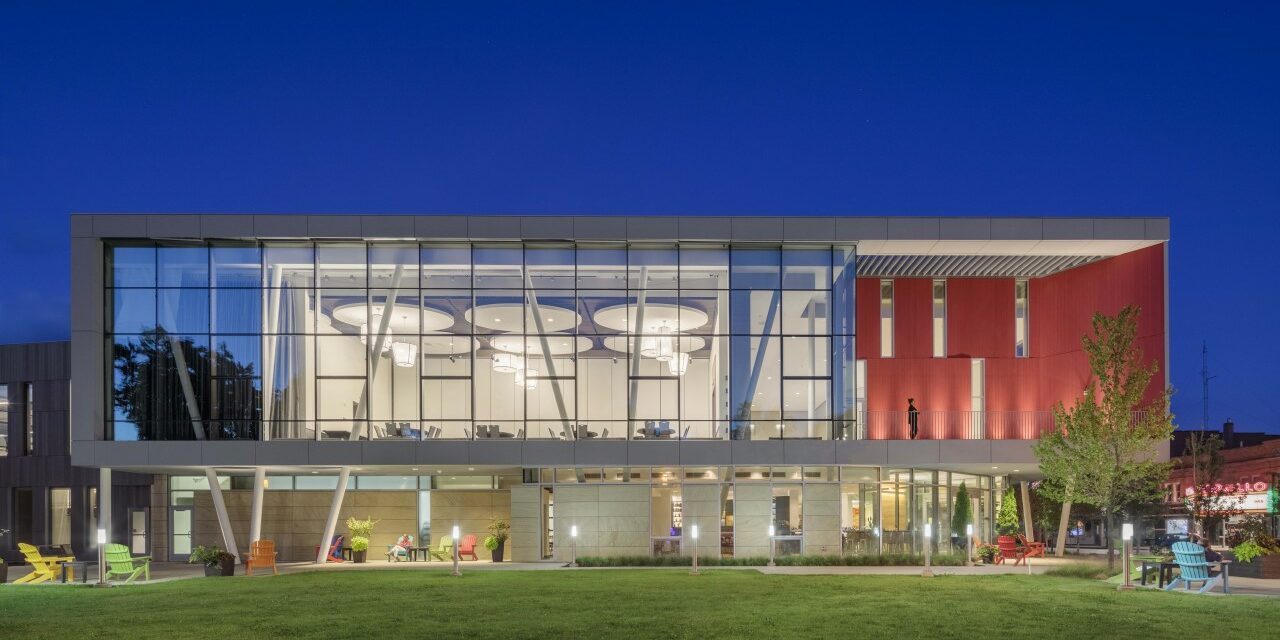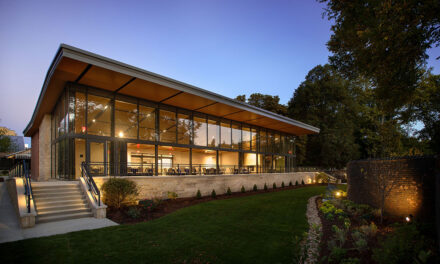The Peter B. Lewis Gateway Center at Oberlin College is the cornerstone project of the new Green Arts District, a 13-acre block that will bring the arts and sciences together to create a transformative sustainable community. The Gateway Center’s Hotel at Oberlin is the fifth new hotel in the U.S. designed to meet LEED Platinum status.
Oberlin College is a national leader in the arts with a reputation for pioneering work in environmental sustainability. Architecture firm SCB worked with the College to realize its vision for the Peter B. Lewis Gateway Center, a highly sustainable, mixed-use building that serves as the front door to both the City of Oberlin and the Oberlin College campus.
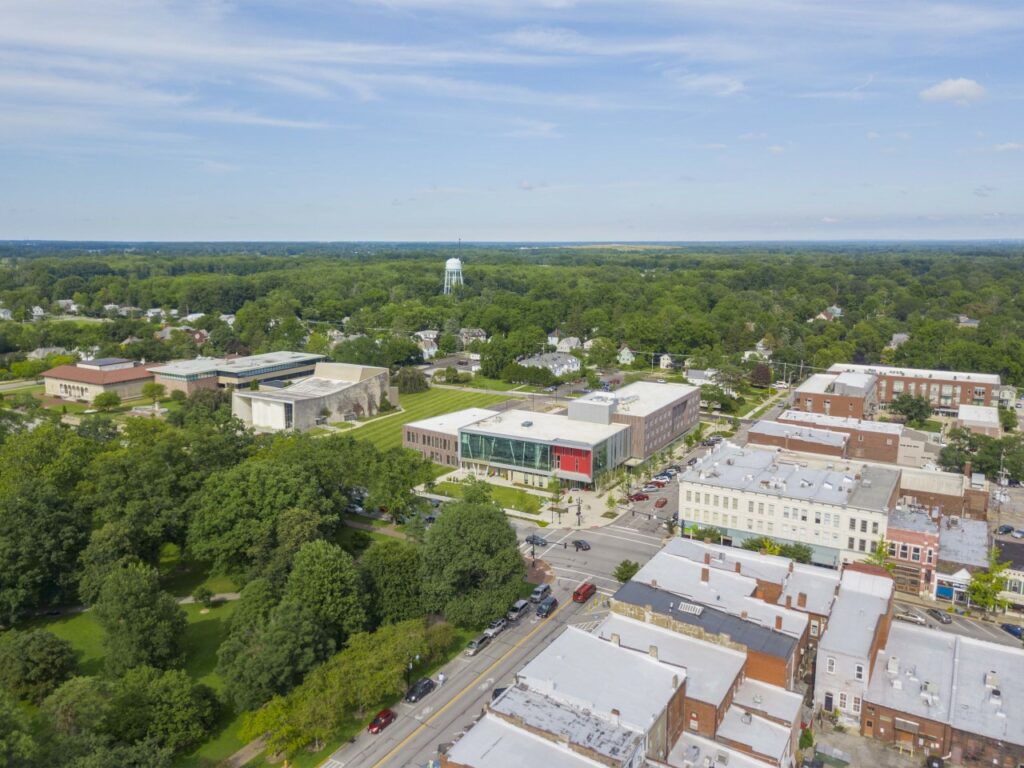
Photo credit: © Bran Feinknopf
The 104,000-square-foot, mixed-use Gateway Center is a model for high performance buildings and whole systems thinking, utilizing a groundbreaking mix of first-of-its-kind sustainable technologies and innovative visitor engagement strategies.
Encompassing guest rooms, event and conference spaces, a welcome center, a farm-to-table restaurant, and the College’s administrative offices, the project reimagines the campus hotel typology to create a focal point that unites the City and the College.
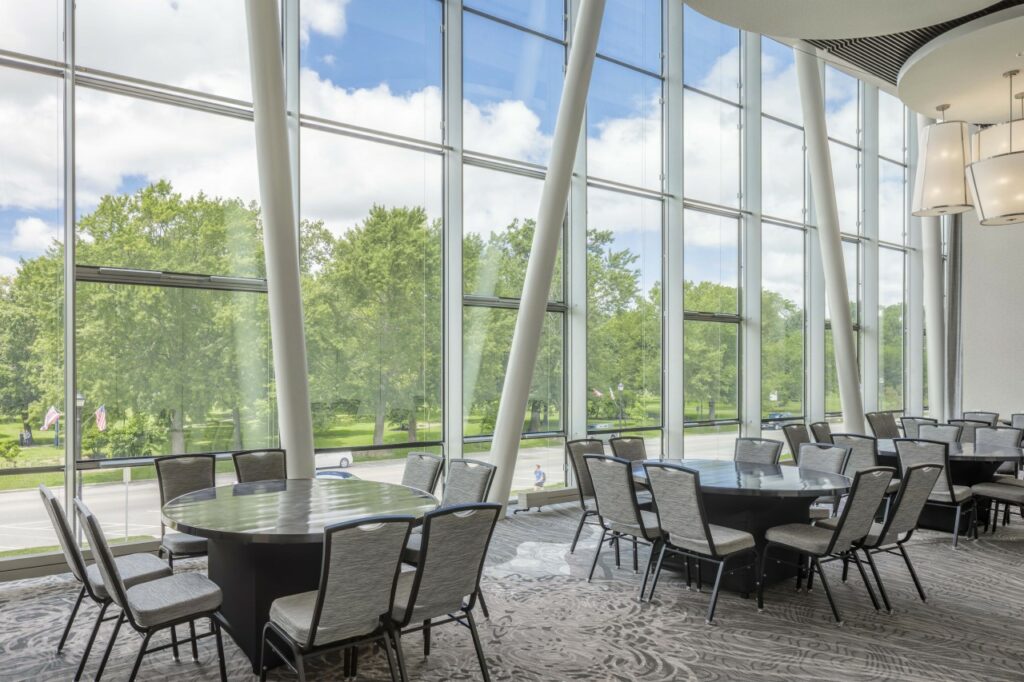
Photo credit: © Bran Feinknopf
The Gateway Center includes:
• Hotel at Oberlin housing 70 rooms and suites;
• 1833 Restaurant;
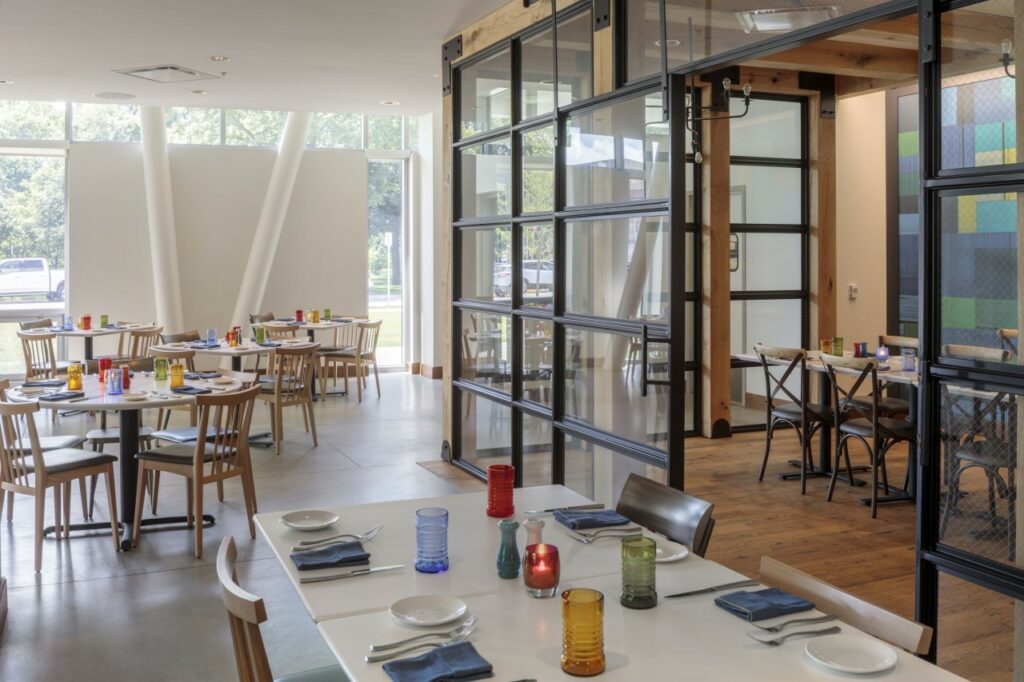
Photo credit: © Bran Feinknopf
• William and Helen Birenbaum Innovation and Performance Space which serves as both a teaching space and venue for performances and events;
• Clyde McGregor ’74 Office of Admissions;
• Oberlin Center for Convergence (StudiOC) a modern flexible, active learning, and educational space;
• and the Gertrude B. Lemle Teaching Center.
The Hotel at Oberlin is the first hotel in the U.S. to utilize radiant heating and cooling, supported by a geothermal well field and derives additional power from the College’s existing photovoltaic array. As measured by Energy Use Intensity, the building will be within the top ranking of commercial structures in North America using 55 percent less energy than comparable buildings.
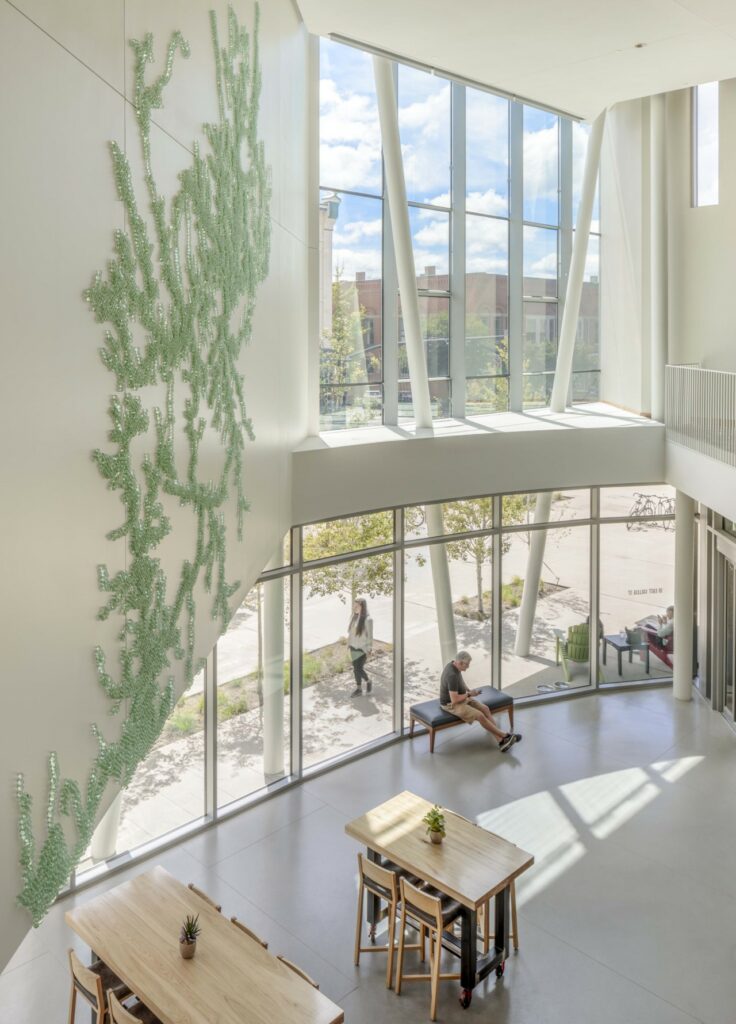
Photo credit: © Bran Feinknopf
Other innovative sustainable features include rainwater collection and reuse, exterior automated solar shading devices that respond to weather and sun exposure, a highly effective thermal envelope that uses rain screen technology for long term moisture control, and natural ventilation through automated window vents and skylights.
The project also used natural, salvaged, or recycled materials wherever possible and sourced 50 percent of building materials from within 500 miles. Together these systems all serve to round out the building’s creative approach to green practices in building design, construction, and use.
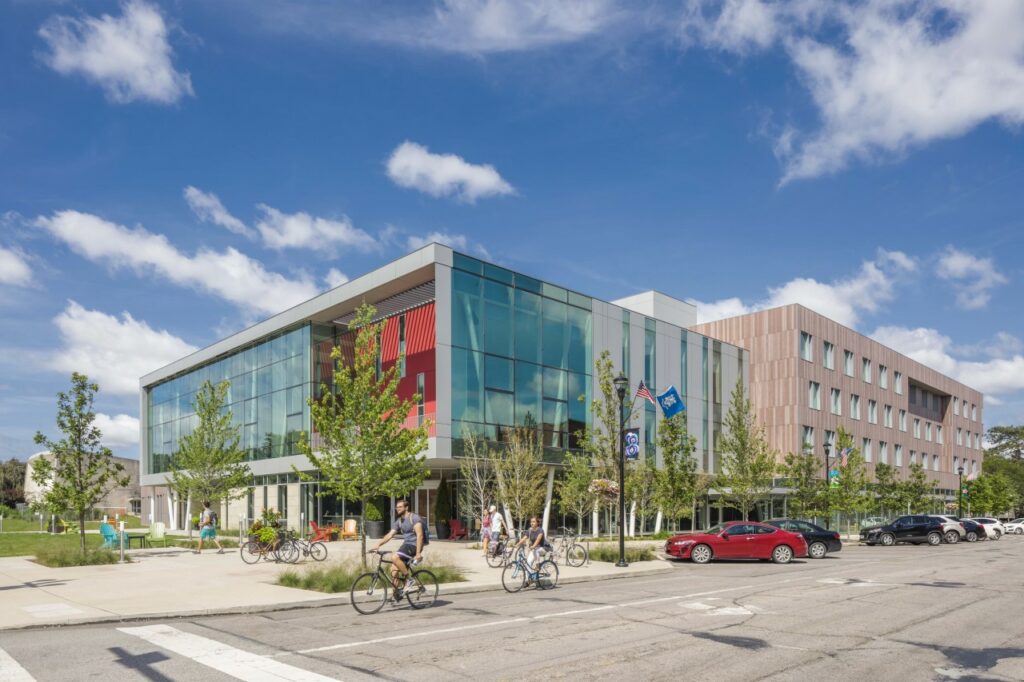
Photo credit: © Bran Feinknopf
Architect: Solomon Cordwell Buenz (SCB)

